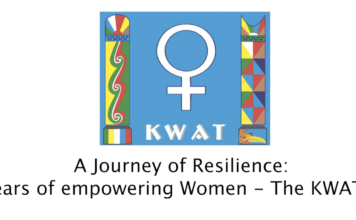As the monsoon season in Myanmar comes to an end, there has been an increase in air and ground offensives against ethnic minority people. In the middle of September, 6 Burmese Army ships and 100 troops travelled up the Irrawaddy and landed in Shwegu, leaving a wake of arson, destruction and displacement in their wake. This incident follows closely on the arrival of 6 military vessels to Bhamo on August 19th, reported in KWAT’s last security briefing. The cases documented by KWAT show that this influx of resources and ammunition has strengthened the operations of the troops already stationed in Kachin, which spells disaster for vulnerable community members as the surge in conflict begins.
Attacks
On the 1st September, the KIA and PDF attacked an SAC temporary outpost at Kyauk Gyi village in Shwegu, seizing the outpost at 6am. At 6:30am, the Burmese Army flew two jet fighter planes over the area, dropping bombs close to Kyauk Gyi village. The villagers fled in fear to the neighbouring village of Kyauk Talone, returning to Kyauk Gyi the next morning. These attacks by resistance forces in Kachin were joined by attacks in Kayah and Bago regions against the Burmese Army, as conflict nationwide rises.
On the 4th September, Burmese Army troops entered Myo Thit camp, travelling from Bhamo township. As soon as they arrived, the troops began shouting at villagers and shooting randomly into houses.
On 9th September, the Burmese Army shelled a high school at Daw Hpum Yang, leaving two female teachers badly injured. On the same day, 25 Burmese Army convoys who were stationed at Daw Hpum Yang travelled to Hka La Yang village in search of food, and were attacked by the KIA with landmines, leaving 3 convoys damaged.
On the 11th September, Burmese Army soldiers engaged KIA and PDF soldiers in conflict near Hawng Pa village in Hpakant. The KIA and PDF ambushed a troop of 50 Burmese Army soldiers on their way back to Hawng Pa village, which drove them back to their military outpost at Tar Mahkan. The Burmese Army soldiers illegally commandeered 8 civilian cars, tying the hands of the drivers, and drove to the outpost in their vehicles.
On the 16th September, the KIA seized Lai Lum Bum outpost, previously controlled by the SAC, which was followed by attacks from two SAC jet fighter planes.
On the 20th September, the Burmese Army shelled Nyaung Pin Tar village in Bhamo, killing 2 civilians and injuring 2 more. On the same day, KIA and PDF forces attacked and seized the Daru Hka Burmese Army outpost at Sum Pra Bum in Putao.
Displacement
On the 7th September, villagers from Lung Jung village in Daw Hpum Yang township heard that Burmese Army soldiers were soon to arrive, and all the villagers fled into the surrounding jungle in fear of their lives. When the Burmese army soldiers arrived, they raided civilian houses, taking food and livestock with impunity. Once they had stolen everything worth taking, the troops continued to the next village of Ban Kawng Mu. There they also found the village deserted, as residents had fled to the jungle in anticipation of the soldiers arriving. Civilian houses in Ban Kawng Mu were also raided, and food and livestock stolen by the soldiers.
Human shields and forced labour
On the 18th September, 100 Burmese Army soldiers and 6 ships carrying supplies and ammunition arrived to Moe Sit village in Shwegu township via the Irrawaddy river. Upon embarking, soldiers set fire to over 20 civilian owned boats, used by villagers to search for gold for their livelihoods. Over 10 civilians were immediately arrested, and villagers forced to carry around 600 heavy bags of rice from the ship to the shore.
Arbitrary arrests and executions
On the 3rd September, a 50 year old woman from Mogaung and her husband were arrested by Burmese Army soldiers, accused of supporting the PDF. The couple owned a petrol station, which was then destroyed by SAC authorities. 7 days after their arrest, the woman’s family were informed that she was dead, and the body was cremated on the 12th September. The family were given no further information as to the circumstances of her death, neither were they permitted to see the body.
On the 21st September, Burmese Army soldiers stopped civilian cars at Tang Hpra village in Myitkyina, and arrested 10 youths who were forced to act as human sheilds for the troops as they carried out reconnaissance of the village.
On the 24th September, two men were arrested at a military checkpoint in Wu Yan village, Waimaw. The family members of one of the men tried to contact him without success, and the next morning their village head reported to the family that the arrestees had been sent to Northern Commandar military camp at Myitkyina. At the time of reporting, their situation and whereabouts are unknown.
On the 27th September, 8 male members of the Kachin Baptist Church in Katsu village in Waimaw were arrested, all of whom are displaced people from Nam San Yang village. The arrestees were taken to Dabak Yang village. On the same day, a soldier contacted the Katsu church leader and commanded him to come to
Dabak Yang village to collect the men, and the church leader arrived to the village in the midst of an intense battle between the KIA and the Burmese army. During the fight, one displaced man was badly injured by a landmine explosion, and was rushed to Myitkyina military hospital with the help of the church leader.
Conclusion
The beginning of dry season has always meant an increase in fear in rural areas of Myanmar, as the Burmese Army are more mobile and historically have used this time to increase attacks, arrests and gender-based violence against civilians. September has brought what many fear is just the beginning of an increase in devastating aerial and naval attacks, where bombing of civilian areas is designed to destroy homes, villages and kill villagers indiscriminately. Reports of cluster bombs being deployed by the junta in Chin, Karen, Karenni and Shan states by other news sources are deeply disturbing, and further proof that the military regime is reaching a point of desperation in their efforts to quell the actions of the resistance forces. September 7th marked two years since people’s defensive war was initiated by the NUG, and since then the Burmese Army have lost significant ground and sustained serious damage from repeated offensives by resistance forces. However, in the wake of this extended conflict, women and girls in Kachin are suffering the effects of war, displacement, systematic chaos and gender- based violence.
download PDF file in [English]




